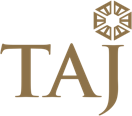What is GST Reconciliation in Singapore?
There is no form of Value Added tax in Singapore levied on the Goods and Services. Instead, the revenue authorities charge GST (Goods and Services Tax) on imports into Singapore. Apart from this, GST is levied on the supply of goods and services in Singapore. GST is chargeable on the supply of goods and services to consumers. The current rate of GST chargeable in Singapore stands at 7%. GST reconciliation is the process in which the records match the supply of goods and services to the receipts.
In other words, GST reconciliation can be understood as the data which is provided by the supplier to the data of the receipts. The process of matching this data is called as GST reconciliation. GST reconciliation is carried out to ensure that no wrong inputs are present when filing the GST returns.
Reconciliation is to ensure that the amount of supply matches to the receipts. It is crucial to carry out the reconciliation process so that vendors can claim a specific amount of input tax credit.
Why is GST Reconciliation in Singapore Important?
Reconciliation is a process used in accounting. Another word for reconciliation is known as a tally. Hence reconciliation is used in GST to ensure that there are no forms of errors and omission caused in calculating the amount of GST return in Singapore. One of the main reasons for carrying out reconciliation is to reconcile the data of supply and receipts to avoid any form of errors or mismatches. In any tax jurisdiction, when it comes to filing of GST returns, it is crucial for the entity or the individual to file proper GST returns.
GST reconciliation makes sure that the amount of tax input and tax outputs are the same. This is measured by the number of supplies and purchases when filing the amount of GST return. The process of reconciliation is straightforward. However, it takes a specific amount of time to carry out the process of reconciliation. Therefore taxpayers need to pay attention to the GST reconciliation process as tax regimes such as Singapore are more stringent when it comes to calculating GST returns.
Categories of GST Reconciliation
GST reconciliation is used in the following areas:

-
Errors or Mismatches
If the seller and the taxpayer have entered the same information about the invoice, but there are errors present in the invoice's content.
-
Differences in Invoices
Reconciliation can be used if there are some differences in the number of taxable invoices in the business.
-
HSN Code
Reconciliation is also carried out if there is any form of difference in the HSN code of the product or the service.
-
Description
If the description of the product or service is different then reconciliation must be carried out as a corrective measure.
-
Internal Record Management
Reconciliation also has to occur if there is any form of error within the company's internal records. For example, if the seller has provided information on the invoice; however, the information related to the invoice is not present in the firm's internal records.
-
External Record Management
Reconciliation of GST occurs when there are apparent errors in the firm's external records. For example, if some form of information on a particular invoice is present in your accounts; however, the same information is not present in the seller's accounts.
Who Regulates GST Reconciliation Process in Singapore
The primary regulatory authority for GST reconciliation in Singapore is the Inland Revenue Authority of Singapore (IRAS). They are responsible for carryout out the process of GST filing and return of GST. Apart from this, IRAS carries out all the processes of tax within the jurisdiction of Singapore. The IRAS along with the ACRA takes up all the formation of corporate entities in Singapore. The IRAS, along with the ACRA, are the primary regulators for GST within Singapore.
What is the main reason for GST reconciliation?
- Reconciliation is to ensure that correct information is provided to the authorities to ensure that there are no penalties levied by the IRAS.
- Another reason for GST reconciliation is to ensure that the vendor can claim a specific amount of input tax credit within Singapore. If invoices are not reconciled regularly, then no input tax credit can be received when filing the GST return. Taxpayers require GST reconciliation to pay input tax credit.
- By carrying out the reconciliation process, the records would be present to file the amount of GST returns.
- GST returns have to be differentiated from annual returns that are filed by the taxpayer. GST returns are required to be filed by the taxpayer on a monthly, quarterly basis. The annual return would require to be filed by the taxpayer on an annual basis. When these returns are filed, the consolidated data would be utilized to carry out this process. Consolidation is important when it comes to not duplicating data used. Reconciliation and consolidation of data are required by the taxpayer to ensure a declaration made by the taxpayer to the IRAS.
- The taxpayer has to comply with the norms of GST return. Hence, if the taxpayer carried out reconciliation, it would be straightforward to claim the amount of input tax credit. Moreover, GST reconciliation must be carried out in compliance with the requirement of the IRAS and the ACRA.
- GST is levied on the imports also in the country. Apart from this, the tax is also levied on the supply of goods and services. A company can claim a certain amount of input tax on the number of purchases. This will indirectly contribute to an investment in the economy. The consumer will pay the amount of GST on the finished product. As the goods pass from the company to the manufacture to the consumer, GST is levied. For example, an importer of certain capital goods will be able to claim a certain amount of input tax on the capital goods sold in Singapore. A company using capital goods will be paying a specific amount of GST on the use of these goods. When these goods are sold ultimately to the consumer, the consumer will be paying the amount of GST on the finished product.
- GST is a form of tax that is levied on all processes within the tax cycle. It is levied on the purchase of imported goods. This is further levied on a company that uses imported goods to manufacture finished products. Even in the last chain of the tax cycle, GST is levied. Hence reconciliation is an important aspect of GST.
- Input tax can also be used in buying commercial and industrial properties. In this process, a company that uses commercial and industrial properties can claim a specific input tax, as this capital will be used in the production of products.
What would happen if there are errors in the invoices?
If there are errors in creating invoices between the seller and the buyer, then the following has to be carried out:
- Either the changes can be accepted.
- The taxpayer can notify the seller about the same. This would take some amount of time.
Process for GST reconciliation
- Any business or entity that is eligible for registering GST has to file GST returns. An applicant has to register with the ACRA for starting a business.
- Every business that is registered with the ACRA to file the specific amount of tax returns.
- A company registered with the Accounting and Corporate Regulatory Authority (ACRA) will have a specific accounting period. In terms of the quarter system, the quarter is divided as:
1. March 31.
2. June 30.
3. September 30.
4. December 31.
- At the end of the company's accounting period, the returns have to be filed with the IRAS. After this is carried out, the IRAS will provide information on the amount of input tax and the amount of output tax.
- Reconciliation can be carried out using specific technological software, which is provided by Enterslice. We have experts dealing with GST filing procedures in Singapore. Our in-house team of experts will help you in the process of GST filing as well as reconciliation.
- This process must be carried out regularly to ensure that there are no mismatches and errors in the information provided.
Eligibility criteria for GST Reconciliation
Businesses with an annual taxable turnover of more than SGD 1 Million (Singapore Dollars) are only eligible to register for GST. Once these entities are registered for GST, the company would have to reconcile the amount of GST for the taxable year as regular taxpayers.
Documents required for GST Reconciliation
The following Documents are required for GST reconciliation:
- GST Tax Reference / GST registration number.
- Corppass ID number and account.
- Annual Returns.
- Invoices of the Company.
Enterslice Advantage
At Enterslice, we have an expert group of professionals who will address your global business development needs. Our professionals have expert knowledge of GST services in Singapore. We act as a one-stop-shop for all your business needs. Using our service for GST reconciliation in Singapore would provide you with the following benefits:
- We will assist you with the GST filing.
- We monitor and keep you updated on the GST filing with the IRAS.
- We assist you in calculating the GST return.
- We also help you to understand the reconciliation process.

 (+1) 6292766228
(+1) 6292766228




























